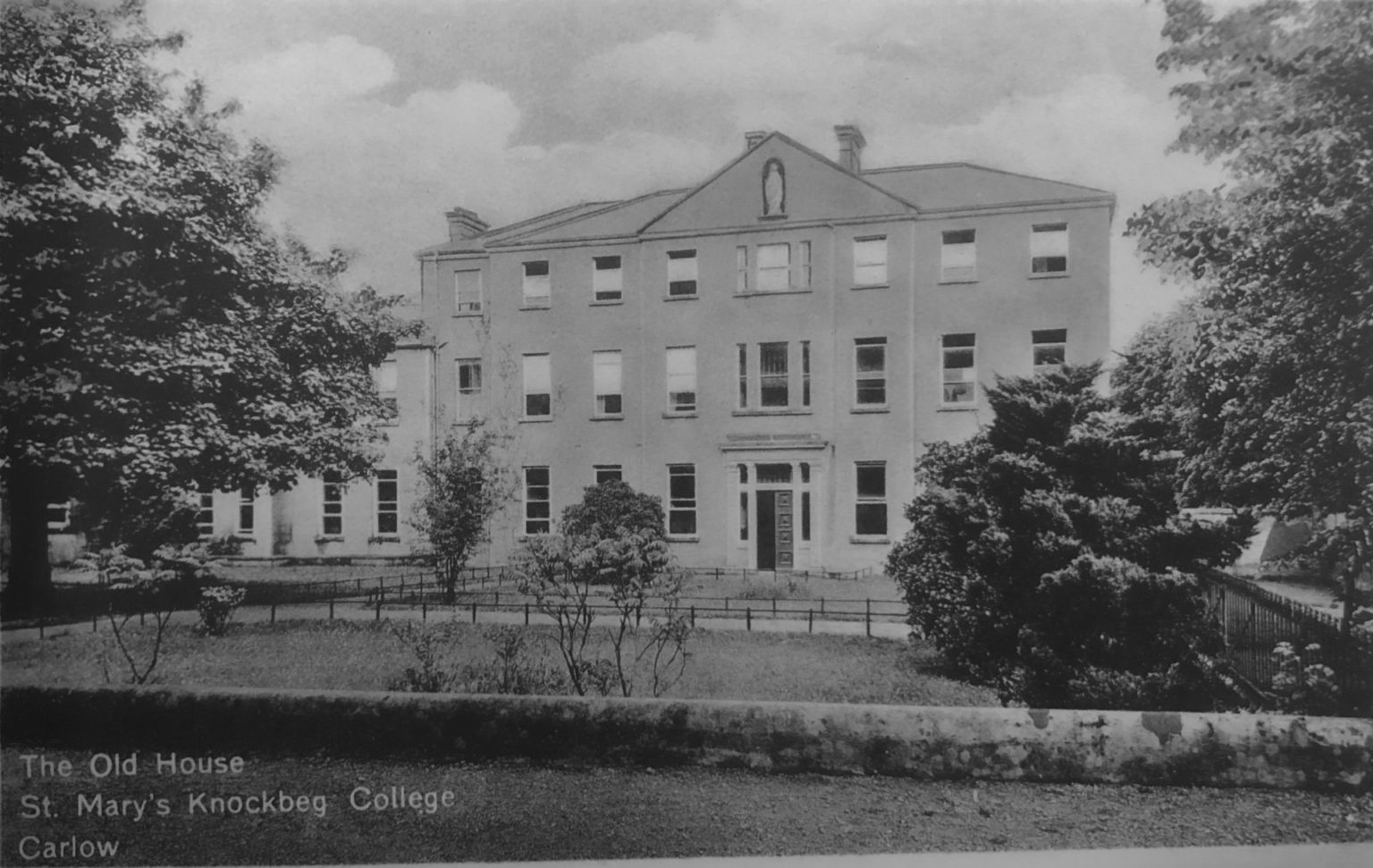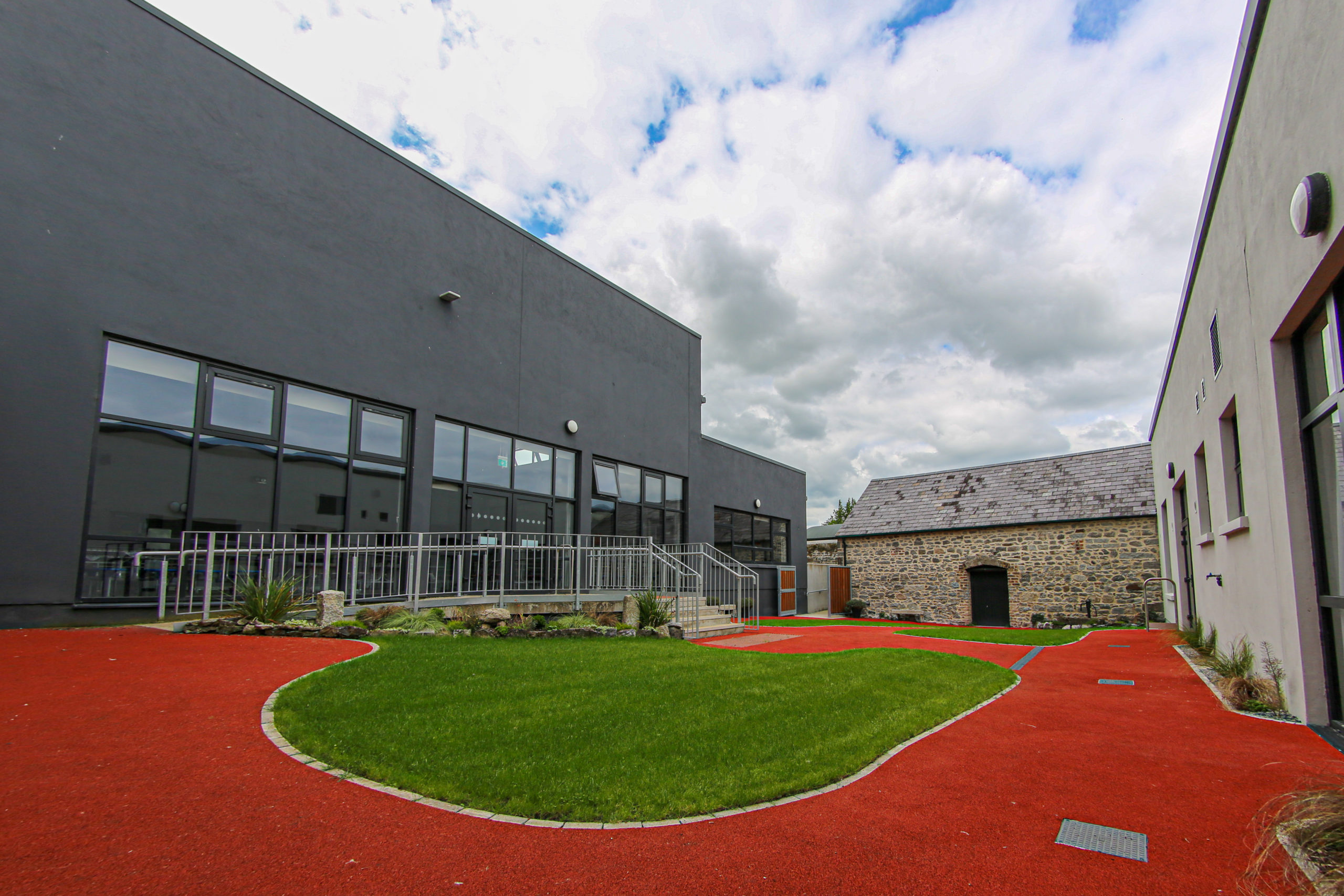Over 200 Years
Of History
History
By Monsignor Byrne
Knockbeg College traces its foundation directly to the decision in 1782 by Bishop James Keeffe of the diocese of Kildare and Leighlin to open what would have been the first Catholic school in Ireland after the Penal Days, for “the education of Roman Catholic youth”, something generally forbidden by the Penal Laws. Work began very soon on the building of the college in Carlow town, but it was not until October 1st 1793 that the first students were taken in. From the start the intake included students for the priesthood as well as lay students for the professions and business.
In time, the section catering for the lay students came to be known as Carlow Lay College. St. Patrick’s College was used to cover the Lay and Ecclesiastical Colleges.

As decades passed numbers grew considerably and in 1847 the mansion known as Knockbeg House was purchased and established as a preparatory school for young boys for the Lay College. The first extension to the Knockbeg House was in 1880 and in the early 1890s it was decided to transfer the entire Lay College to Knockbeg. In 1898 it became the Minor Seminary for the Diocese of Kildare and Leighlin. It was known as Carlow Lay College Knockbeg, or Knockbeg Lay College and was initially under the President and administration of St. Patrick’s College. Numbers grew, the Front House was added in 1903 and other additions were made down through the years.
Throughout the 19th century Carlow College staff, students and past pupils played an important role in the religious, political and cultural life of this country.
As Church leaders Cardinal Cullen, Bishop James Doyle, (JKL), Dr Daniel Cahill immediately come to mind.
In the political field, a former professor of history at UCG, Dr Tom O’Neill, wrote: “There was scarcely a movement in nineteenth century Irish Nationalism that past pupils of the Lay College did not contribute to in a substantial way”. Names like James Fintan Lalor, Young Irelander John O’Leary, Edward Marum, a Parnellite MP, Patrick Cahill, founder of The Leinster Leader, Myles Kehoe, killed at Little Bighorn and Willie Redmond, MP are remembered and in the world of culture, poets Richard D’Alton Williams and William A. Byrne and artist Frank O’Meara must be mentioned as past pupils.
After the Lay College moved to Knockbeg in 1892 the well established ethos was maintained among the students who followed in succeeding generations. This became particularly clear in the second decade of the last century when Fr. P.J. Doyle was Rector. It was the decade of Gaelicisation. Enthusiasm for the Irish language grew and really flourished under Gearóid O’Sullivan, who had raised the tricolour on the GPO on Easter Monday 1916 and came to teach in Knockbeg on his release from prison. As well as being a very successful and much loved teacher, he was busy organising the local IRA. During the War of Independence the College came to be known as The Rebels’ Paradise among the police and military in Carlow, because it was a safe meeting place and centre of planning for many leaders on the run, including Michael Collins, Rory O’Connor, Paddy Fleming and past pupil Kevin O’Higgins, who was later assassinated as Minister for Justice in 1927. Two past pupils, Seamus Lennon and Kevin O’Higgins were members of the First Dáil in 1919.
During this period hurling and Gaelic football replaced cricket and rugby and the College won the first Leinster Colleges’ Senior Football Championship in 1920.
The best in Gaelic traditions were maintained throughout the long rectorship of An tAth. Peadar MacSuibhne (1927 – 1949) who always spoke as Gaeilge to the students. For a period Knockbeg was recognised as an A School, i.e. teaching subjects and taking examinations through Irish.
Gaelic games continued to thrive and the name of the great Tommy Murphy , the local “boy wonder” will always be linked with Knockbeg. That tradition reached its zenith in winning the Leinster Colleges’ Senior A championships in both football and hurling in 1955. It was a long wait for All Ireland glory in football in 2005.
Two GAA presidents were past pupils of Knockbeg, Hugh Byrne, (Wicklow, 1961-1964) and Liam O’Neill, (Laois, 2012-2015).
In the post war decades, Knockbeg continued to be a very popular boarding school throughout the diocese and beyond. As well as supplying the great majority of students for the diocesan priesthood, many others went abroad as missionaries. The college continued to provide valued members for the professions and business and political life. Before the introduction of free transport for all second level pupils in the late ‘60s, it had reached a packed capacity of around 170 boys.
This introduction of free transport resulted in a drop in demand for boarding places in schools like Knockbeg and it was inevitable that day pupils would be taken in. This happened in the mid 1980s and as the day pupil numbers grew, the boarding was gradually phased out, finally ending in 2011.
A Past Pupils’ Union, with branches in Dublin and Carlow, is still very active. It has always welcomed and supported younger members and kept the bonds of friendship alive and well through different social and sporting events.
As day pupil numbers grew, the rooms of the original Knockbeg House, now over 200 years old, were still in use. For a long time it was clear that huge renovation and extension work was necessary. Exactly 200 years after the opening of the College, the first building grant ever received from the State was granted for a new science block. But it took almost another 25 years of appeals and pressure before final approval was given for the restoration and complete renovation of the old buildings, along with a large extension over what used be the farmyard area of the original Knockbeg House. The extension includes a gym and sports hall, two ASD units with sensory rooms and gardens, a new canteen and a music room. A new three storey class hall block overlooking the Barrow was also added. Outside, four new basketball and tennis courts were added to the four existing football pitches, and very extensive new parking is now provided.

Vatican II says: “What makes the Catholic school distinctive is its attempt to generate a community climate in the school that is permeated by the Gospel spirit of freedom and love.” Knockbeg has always tried to maintain that Catholic identity where religious education is integrated into the wider education of the pupils in a spirit of justice, harmony and equality for all, irrespective of social status or ability. That Catholic approach has stood this College in good stead for 230 years and it gives it now a unique tradition on which it will continue to build as it faces with great confidence into a very different and challenging future.
(The very spirit of defiance that marked its foundation at the end of the 18th century may be necessary to challenge those who would deny the right of support for Catholic schools who wish to promote some fundamental Christian principles.)